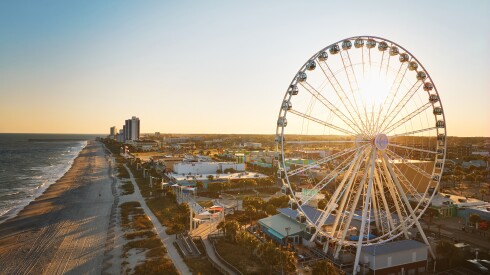A new list of World Heritage Sites has been named for 2025, ranging from opulent Bavarian palaces in Germany to a wildlife-rich ecological area in Sierra Leone.
Each summer, the United Nations Educational, Scientific and Cultural Organisation (better known as UNESCO) World Heritage Committee meets to evaluate nominations from countries around the world, designating sites that meet its criteria of “outstanding universal value,” whether through cultural, historical, or natural significance. The program began in 1972 as a way to identify and protect the world’s most irreplaceable places. Today it encompasses more than 1,200 sites globally, including notable destinations such as the Great Wall of China, Machu Picchu, the Taj Mahal, the Pyramids of Giza, and Angkor Wat.
Getting on the list isn’t easy. It requires rigorous evaluation and proof that the site is both unique and of lasting importance to humanity. But the rewards are great: recognition, preservation support, and an unofficial open invitation to the world’s travelers, for whom the list often serves as trip inspiration; UNESCO puts these notable landmarks on the global tourism map.
This year’s class of newly inscribed sites is a continent-spanning collection of 26 incredible landscapes, spiritual sanctuaries, and historical marvels. Whether you’re a culture buff, a nature lover, or a seeker of incredible views, here are eight of the 2025 inductees worth planning a trip around.
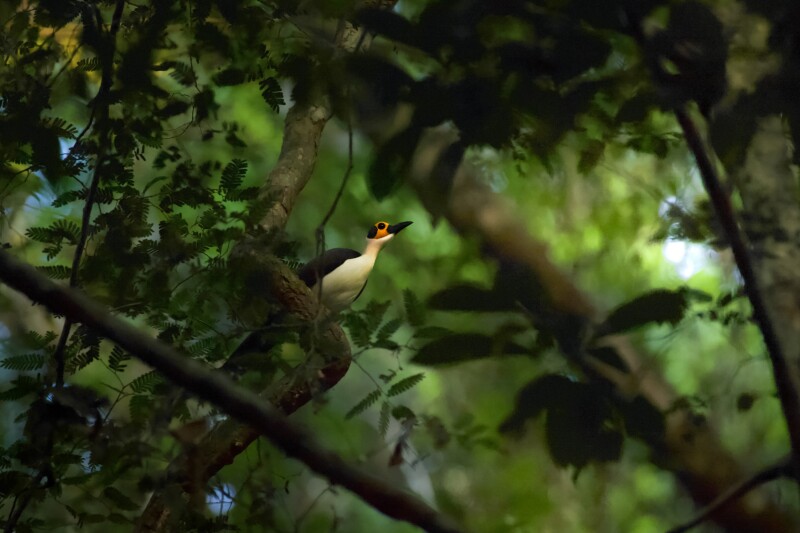
Birders will have plenty to look at among the 450 species in the Gola-Tiwai complex in Sierra Leone, including this white-necked rockfowl.
Photo by Ryan Wilkie/Courtesy of UNESCO
Gola Rainforest National Park and Tiwai Island Wildlife Sancutery
Location: Sierra Leone
Sierra Leone’s first-ever World Heritage Site, the newly inscribed Gola-Tiwai Complex is a natural and cultural property that encompasses both the Gola Rainforest National Park and the Tiwai Island Wildlife Sanctuary. It shelters more than 1,000 plant species, 55 mammals (19 of which are globally threatened), and approximately 450 bird species, making it a significant biodiversity hot spot. The complex’s inscription as a UNESCO World Heritage Site recognizes its global significance for conservation and its potential to boost sustainable development through ecotourism. Already, Tiwai Island offers rustic lodges, river safaris, and guided hikes under thick rainforest canopies for eco-adventurers.
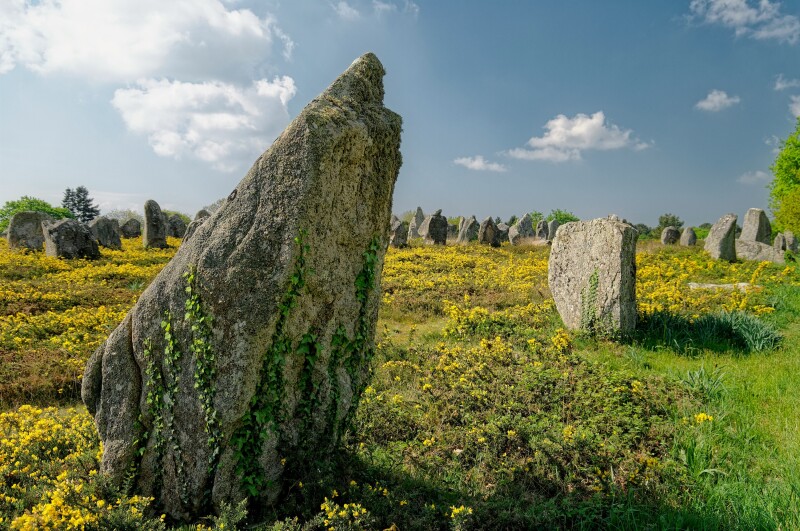
Head to the coast of Brittany to walk among the French Stonehenge, made up of more than more than 3,000 megaliths.
Photo by Andreas Brunn/Unsplash
Megaliths of Carnac
Location: Brittany, northwestern France
The Megaliths of Carnac are France’s version of Stonehenge on steroids. Along the windswept Atlantic coast, more than 3,000 weathered menhirs have been standing sentinel here since 4500 B.C.E. Serving as a rare window into Neolithic culture, the stones suggest complex social organization, spiritual beliefs, and perhaps even an early understanding of astronomy. Their sheer scale and precision—they stretch in rows for miles—have puzzled archaeologists for centuries. Visitors can explore the stone alignments freely from October to March. However, from April to September, they must be accompanied by a guided tour to protect the site.
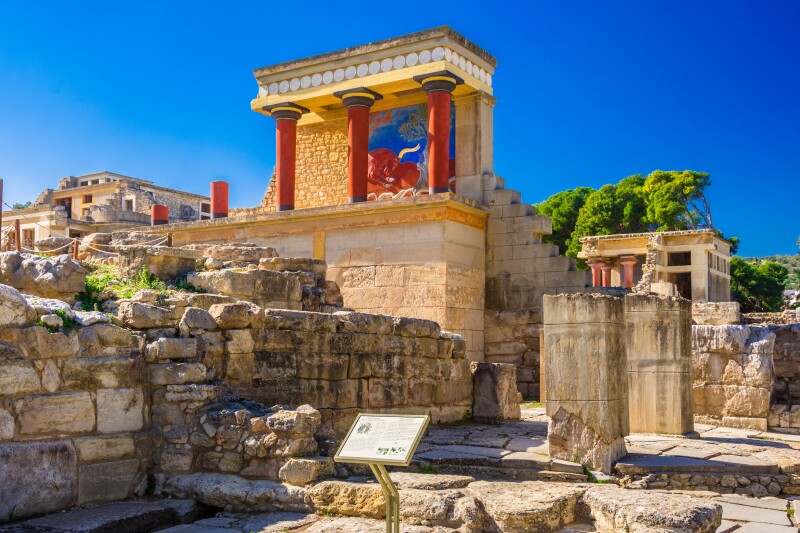
The Knossos complex in Crete is among the Minoan palaces now designated by UNESCO.
Georgios Tsichlis/Shutterstock
Minoan Palace Complexes
Location: Crete, Greece
Long before the Parthenon in Athens, the Minoans were building labyrinthine palace complexes across Crete (the Parthenon was built by around 432 B.C., while the Minoan palace complexes date as far back as 1900 B.C.). These grand, multistoried structures, such as Knossos, Phaistos, and Malia, served as political hubs, religious sanctuaries, and economic centers. These weren’t the ruins of royal residences; they were buzzing administrative cities with vibrant frescoes, storerooms for olive oil and wine, and courtyards where bull-leaping rituals once thrilled the crowds.
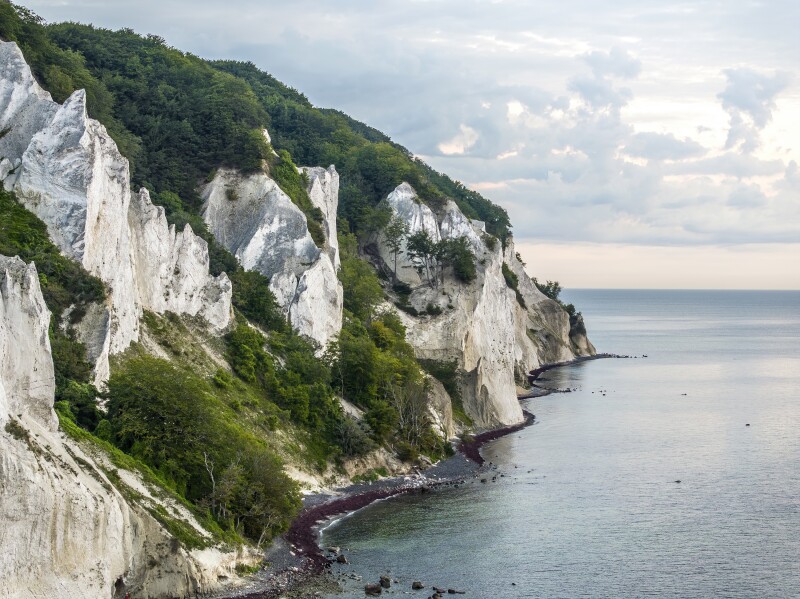
The southeastern corner of Denmark is home to the dramatic white cliffs known as Møns Klint.
Photo by Egon Gade/Courtesy of UNESCO
Møns Klint
Location: Island of Møn, southeastern Denmark
Stretching along the eastern edge of the Danish island of Møn, Møns Klint is a dramatic, nearly four-mile stretch of gleaming white cliffs that rise as high as 420 feet above the turquoise Baltic Sea. Formed more than 70 million years ago, these cliffs are not only a visual spectacle, but also a fossil hunter’s paradise and a geological time capsule. Visitors can hike or cycle along the clifftop trails, descend scenic wooden staircases to reach hidden beaches, or visit the Geocenter Møns Klint to learn how these cliffs were formed during the Cretaceous period. The area is also recognized as Denmark’s first Dark Sky Park, offering stargazers pristine night skies.
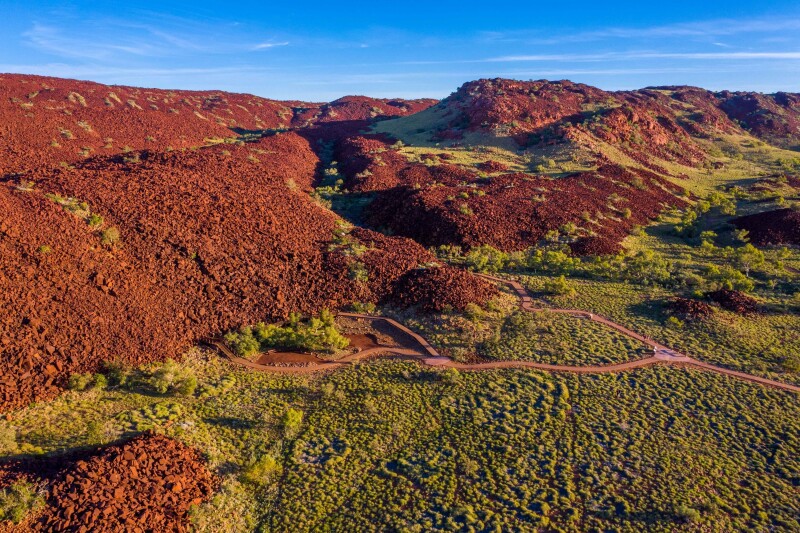
Hidden among the rugged beauty of Western Australia’s Murujuga National Park are ancient galleries that tell the story of Aboriginal history.
Photo by D. Fowler/Courtesy of UNESCO
Murujuga Cultural Landscape
Location: Burrup Peninsula, Western Australia
On the rugged Burrup Peninsula in Western Australia, more than 1 million petroglyphs, some more than 40,000 years old, etch a continuous story of Aboriginal culture and spirituality. These intricate carvings of animals, humans, ancient ceremonies, and more make Murujuga one of the world’s oldest and most sacred art galleries. Visitors can explore interpretive centers and take guided walks with Traditional Owners who share the spiritual and ecological meaning behind the art.
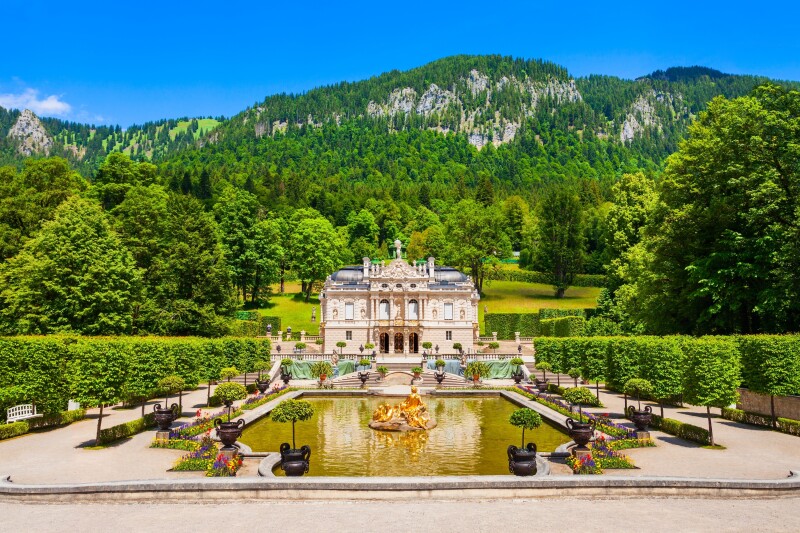
Each of King Ludwig II’s palatial residences, including Linderhof Palace near the village of Ettal in southwest Bavaria, Germany, exemplified the monarch’s penchant for extravagance.
saiko3p/Shutterstock
Palaces of King Ludwig II
Location: Bavaria, Germany
Between 1864 and 1886, King Ludwig II of Bavaria built four fairy-tale castles, each reflecting “the romantic and eclectic spirit of the era,” according to the UNESCO committee. Neuschwanstein Castle, perched high in the Alps, is arguably the most famous of the foursome—it is credited with inspiring Disney’s Sleeping Beauty castle. Linderhof Palace, the only one Ludwig saw completed, reflects the monarch’s fascination with French opulence with its ornate interiors and landscaped gardens. The lesser-known but equally fascinating Schachen house blends Swiss chalet charm with an unexpected Moorish-style hall. And on an island in Lake Chiemsee, Herrenchiemsee Palace is a bold, albeit unfinished homage to Versailles, built to honor Ludwig’s idol, Louis XIV. Together, these palaces, which are all open to the public, offer a captivating glimpse into a king’s eccentric vision—and some of Germany’s most breathtaking architecture and scenery.
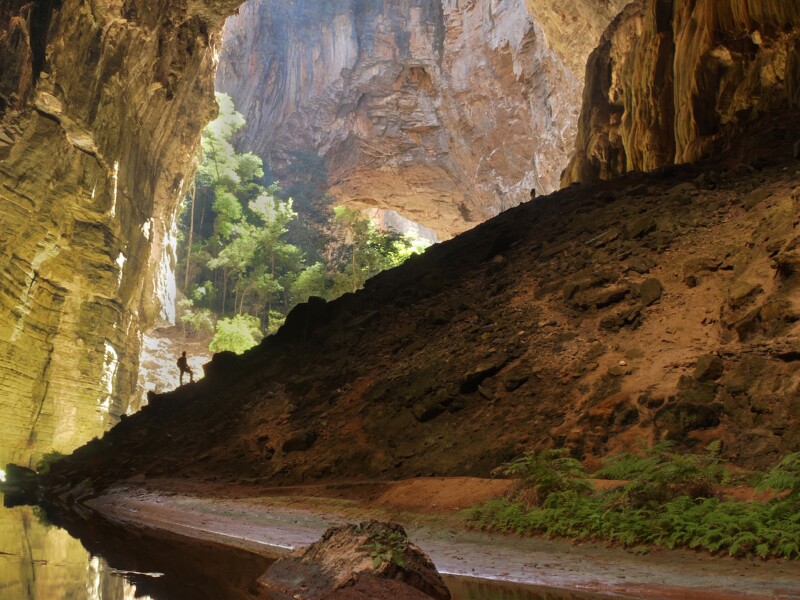
The Janelão cave in Brazil’s Peruaçu River Canyon is among the soaring rock formations that make this unique ecological site worth the journey.
Photo by Luciana Alt/Courtesy of UNESCO
Peruaçu River Canyon
Location: Minas Gerais, eastern Brazil
Tucked deep into Brazil’s Minas Gerais state, the Peruaçu River Canyon is an ecological and archaeological treasure trove. Towering limestone cliffs, lush forest corridors, and enormous caves—some the size of cathedrals—create a wildly diverse landscape. What sets it apart are the prehistoric rock paintings: vivid red and black figures that have adorned the canyon walls and cave interiors for more than 10,000 years.
Adventurers can hike scenic trails with dramatic views over the canyon, take guided cave explorations, or join boat trips along the Peruaçu River to explore its winding gorges and secret swimming spots. The Gruta do Janelão, the largest cave, features massive stalactites and ancient art high above the chamber floor.
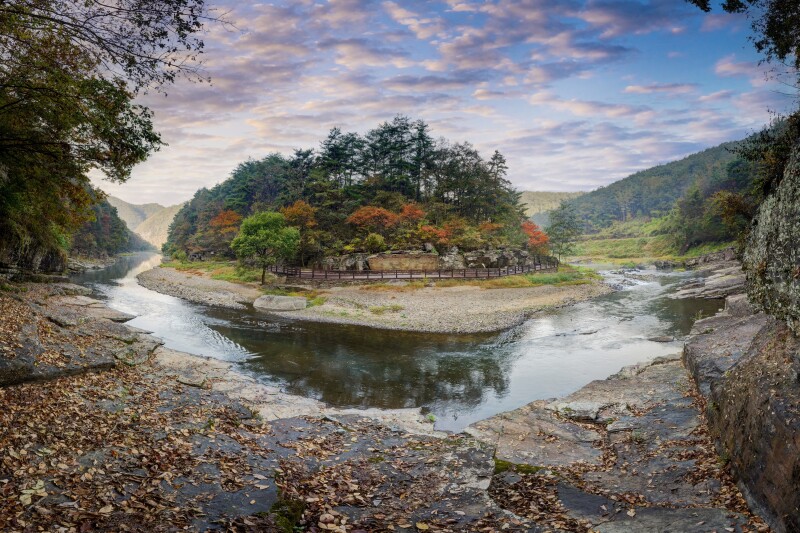
Panels of ancient rock carvings can be found along scenic stretches of the Bangucheon Stream in South Korea.
Photo by Seo Heun-kang/Courtesy of UNESCO
Petroglyphs along the Bangucheon Stream
Location: South Korea’s southeastern coast
Winding through the gentle valleys of Ulsan, these riverside rock carvings, dating back to approximately 5000 B.C., showcase a diverse range of subjects, including whales and shamanic rituals. The Bangucheon petroglyphs are remarkably well-preserved and accessible; visitors can take a jaunt along easy walking paths from which they can examine the carvings up close.
The full list of the 26 new UNESCO World Heritage sites for 2025
- Cambodian Memorial Sites: From centres of repression to places of peace and reflection (Cambodia)
- Coastal and Marine Ecosystems of the Bijagós Archipelago—Omatí Minhô (Guinea-Bissau)
- Cultural Heritage Sites of Ancient Khuttal (Tajikistan)
- Diy-Gid-Biy Cultural Landscape of the Mandara Mountains (Cameroon)
- Faya Palaeolandscape (United Arab Emirates)
- Forest Research Institute Malaysia Forest Park Selangor (Malaysia)
- Funerary Tradition in the Prehistory of Sardinia—The domus de janas (Italy)
- Gola-Tiwai Complex (Sierra Leone)
- Maratha Military Landscapes of India (India)
- Megaliths of Carnac and of the shores of Morbihan (France)
- Minoan Palatial Centres (Greece)
- Mount Kumgang—Diamond Mountain from the Sea (North Korea)
- Mount Mulanje Cultural Landscape (Malawi)
- Møns Klint (Denmark)
- Murujuga Cultural Landscape (Australia)
- Peruaçu River Canyon (Brazil)
- Petroglyphs along the Bangucheon Stream (South Korea)
- Prehistoric Sites of the Khorramabad Valley (Iran)
- Rock Paintings of Shulgan-Tash Cave (Russia)
- Sardis and the Lydian Tumuli of Bin Tepe (Turkey)
- The Archaeological Ensemble of 17th Century Port Royal (Jamaica)
- The Colonial Transisthmian Route of Panamá (Panama)
- The Palaces of King Ludwig II of Bavaria: Neuschwanstein, Linderhof, Schachen, and Herrenchiemsee (Germany)
- Wixárika Route through Sacred Sites to Wirikuta (Tatehuarí Huajuyé) (Mexico)
- Xixia Imperial Tombs (China)
- Yen Tu-Vinh Nghiem-Con Son, Kiep Bac Complex of Monuments and Landscapes (Vietnam)



